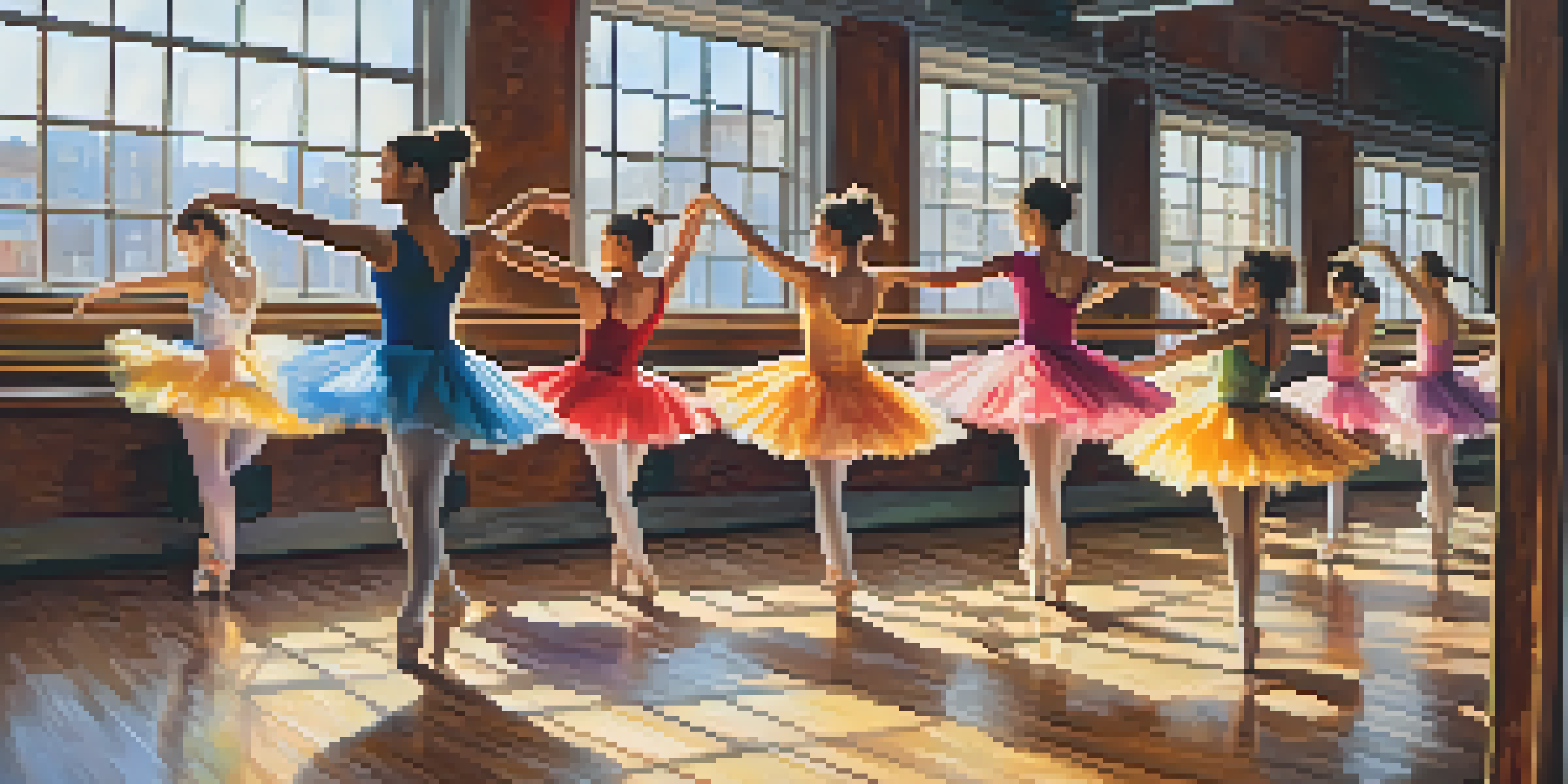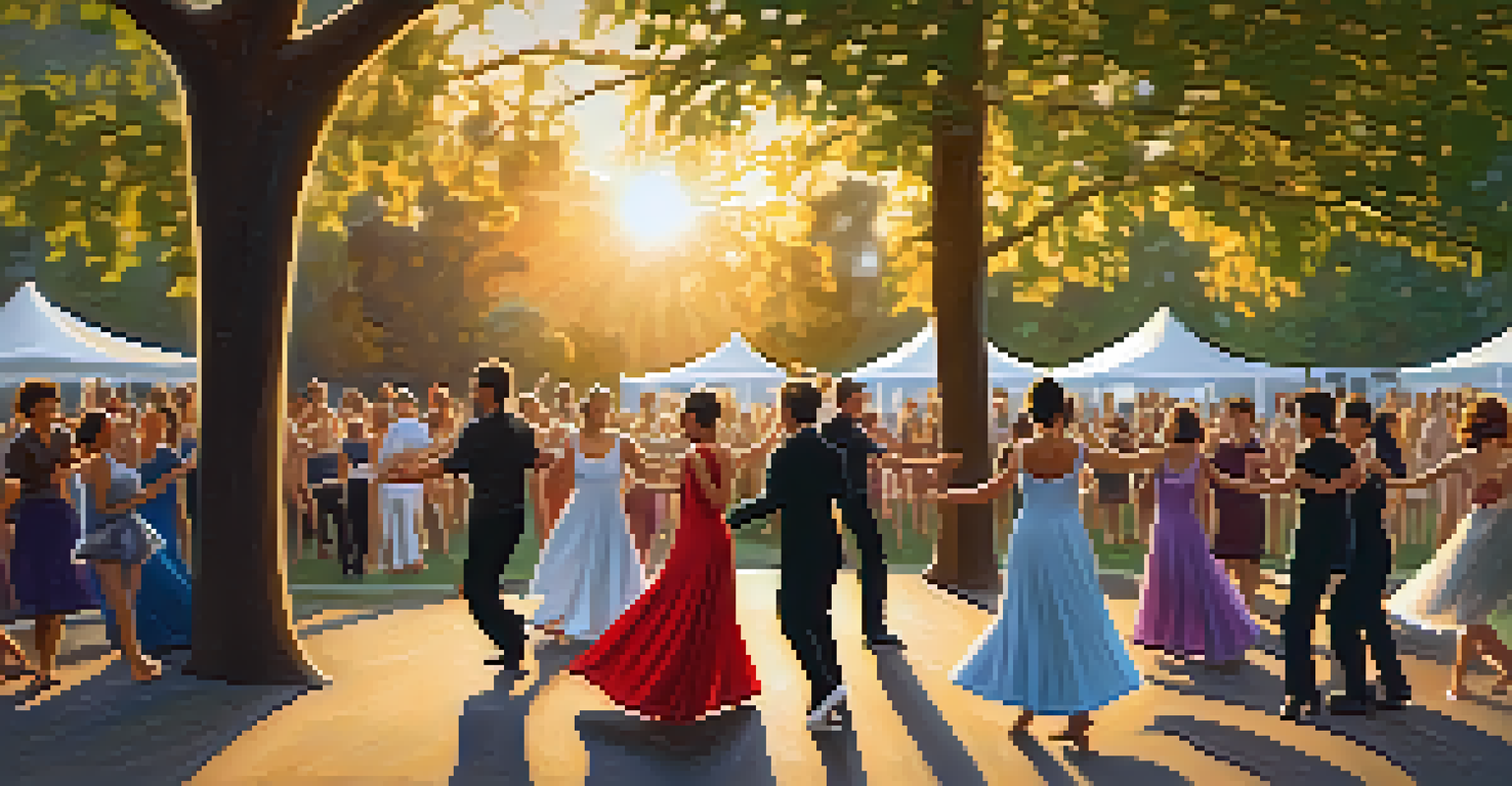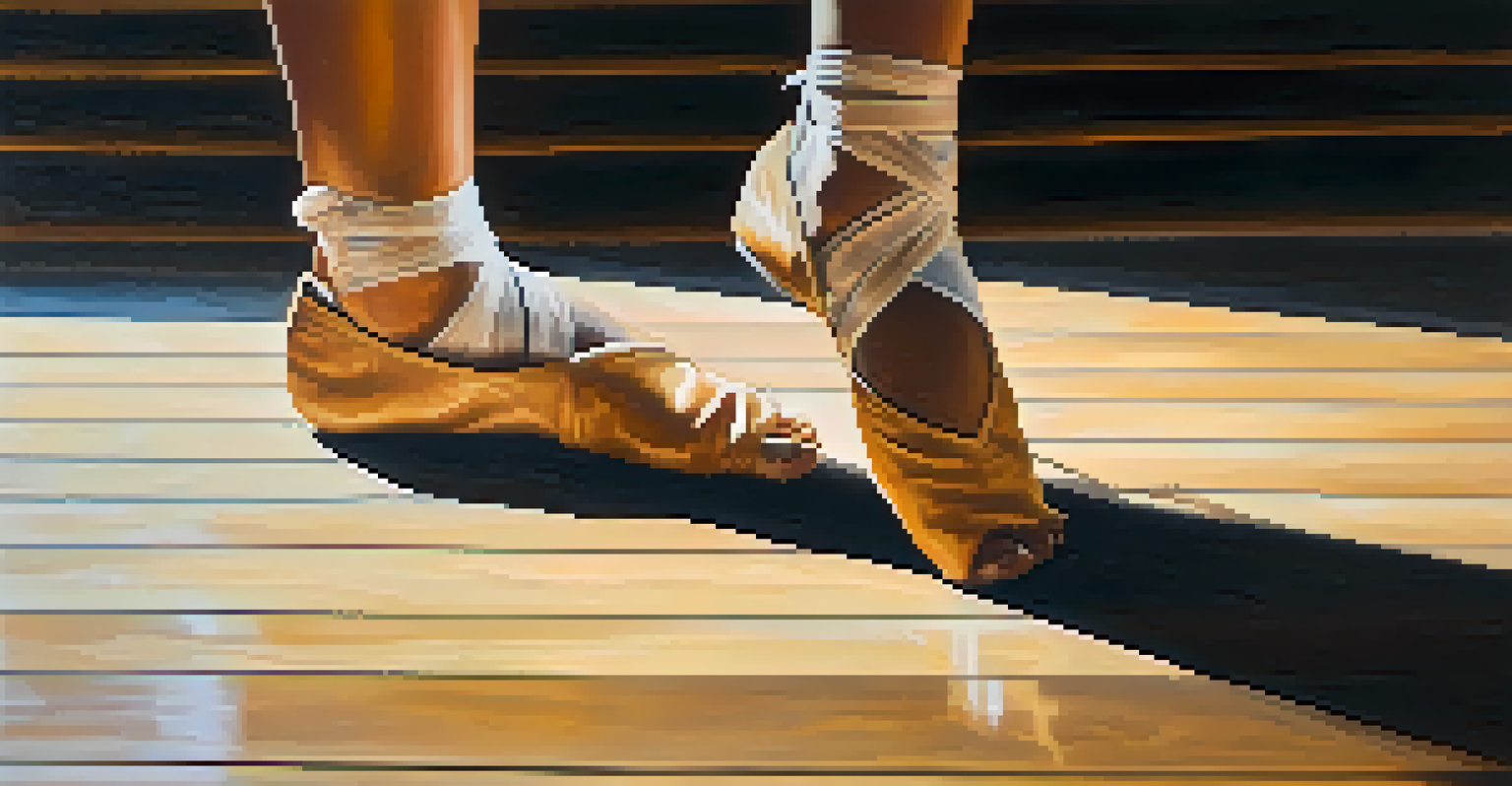The Impact of Dance on Nonverbal Communication Skills

Understanding Nonverbal Communication in Everyday Life
Nonverbal communication encompasses all the ways we convey meaning without using words. This includes facial expressions, body language, gestures, and even posture. When we engage in activities like dance, we tap into these nonverbal cues more deeply, enhancing our ability to express feelings and intentions without speaking.
Dance is the hidden language of the soul.
In many social settings, our bodies often speak louder than our words. Think about how a simple smile or a crossed arm can convey happiness or defensiveness, respectively. Dance amplifies these expressions, allowing us to explore and refine our nonverbal skills in a dynamic environment.
Moreover, dance serves as a universal language, breaking down barriers of culture and language. When we dance, we communicate emotions and ideas that words sometimes can't capture, making it an invaluable tool for improving our nonverbal communication skills.
The Role of Rhythm and Timing in Dance Communication
Rhythm and timing are essential elements of dance that also play a significant role in nonverbal communication. As dancers, we learn to sync our movements with music and with each other, which helps us express emotions in a shared space. This synchronization fosters a deeper understanding of how timing affects interpersonal interactions.

For instance, think about how a dancer might use pauses to create tension or anticipation. In conversation, similar pauses can indicate thoughtfulness or hesitation. By practicing these nuances in dance, individuals can become more attuned to the timing of their own nonverbal cues and those of others.
Nonverbal Cues Enhance Communication
Understanding and mastering nonverbal cues like body language and facial expressions can significantly improve our communication skills.
Ultimately, mastering rhythm in dance translates into a heightened awareness of the rhythms present in our everyday interactions, making our communication more impactful and engaging.
Body Awareness and Its Impact on Nonverbal Skills
Dance requires a high level of body awareness, which is crucial for effective nonverbal communication. Dancers must be conscious of their movements, posture, and even their breathing, all of which convey messages to an audience. This awareness fosters a greater understanding of how our bodies express emotions.
The body says what words cannot.
By becoming aware of our own bodies, we also learn to read others more effectively. For example, when someone shifts their weight or avoids eye contact, these subtle cues can indicate discomfort or disengagement. Dance training helps sharpen this skill, enhancing our ability to interpret and respond to nonverbal signals.
As we cultivate body awareness through dance, we can improve our interactions by being more present and attentive, ultimately leading to more meaningful connections.
Emotional Expression Through Dance and Communication
Dance is a powerful medium for emotional expression, allowing individuals to convey complex feelings without uttering a single word. Each movement can capture a range of emotions, from joy to sorrow, making it an extraordinary form of nonverbal communication. This emotional depth can enhance our understanding of others' feelings in everyday situations.
When we dance, we tap into our emotions, gaining insights into how we express feelings in other contexts. For example, a dancer's graceful movement might convey tranquility, while sharp, quick steps might express excitement or urgency. Recognizing these emotional cues helps us become more empathetic communicators.
Dance Fosters Emotional Expression
Dance serves as a powerful medium for conveying emotions, allowing individuals to express complex feelings without words.
By embracing the emotional aspect of dance, we develop a richer vocabulary for expressing ourselves and understanding others, ultimately improving our overall communication skills.
Social Interaction and Connection Through Dance
Dance is inherently social, often bringing people together in shared experiences. This social aspect plays a crucial role in developing nonverbal communication skills, as we learn to read and respond to the body language of those around us. Whether in a dance class or at a wedding, these interactions foster connections that enhance our understanding of nonverbal cues.
For example, partner dancing requires an acute awareness of your partner's movements and intentions. This connection can create a dialogue where both partners communicate nonverbally, leading to a stronger bond. Such experiences teach us the importance of cooperation and mutual understanding in communication.
Ultimately, the social nature of dance cultivates an environment where we can practice and refine our nonverbal communication skills, making us more adept in various social contexts.
Cultural Perspectives on Dance and Nonverbal Communication
Dance varies widely across cultures, with each style offering unique forms of nonverbal communication. Different cultural dances often have distinct gestures, rhythms, and meanings, allowing for rich exchanges between participants. Understanding these diverse expressions can enhance our appreciation for the nuances of nonverbal communication.
For instance, in some cultures, specific hand movements may signify respect or greeting, while in others, they may convey entirely different messages. By exploring various dance forms, we gain insights into how nonverbal cues can differ across cultural contexts, ultimately enriching our communication skills.
Cultural Insights Through Dance
Exploring diverse dance forms enhances our understanding of nonverbal communication across different cultures, fostering empathy and connection.
Embracing these cultural perspectives through dance can foster greater empathy and understanding, making us more effective communicators in our increasingly global society.
Building Confidence and Self-Esteem Through Dance
Engaging in dance can significantly boost confidence and self-esteem, which are vital components of effective communication. As individuals learn to express themselves through movement, they often become more comfortable with their bodies and how they present themselves to others. This newfound confidence can translate into improved nonverbal communication skills.
For example, a confident dancer exudes positive energy, which can influence those around them. This same energy can be harnessed in everyday interactions, making others feel more at ease and open to communication. When we feel good about ourselves, we are naturally more expressive and approachable.

By building confidence through dance, individuals can enhance their ability to communicate nonverbally, creating a more engaging and authentic connection with others.